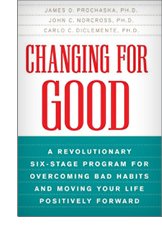Three Strikes To A Home Run? How Cancer, Two Trips To The E.R., and Father Time Have Helped Me Embrace Second Order Change
Greetings *|FNAME|*,
 Spring is a seasonal period of dramatic change, which is especially applicable this year for me. The flowers are in bloom, my grandson has started his baseball season, and all around us are the signs of flourishing life. I ended up not doing a newsletter last month, because I was busy smelling the "flowers of life" and even having my favorite little guy over to visit Paul and me for his Spring Break.
Spring is a seasonal period of dramatic change, which is especially applicable this year for me. The flowers are in bloom, my grandson has started his baseball season, and all around us are the signs of flourishing life. I ended up not doing a newsletter last month, because I was busy smelling the "flowers of life" and even having my favorite little guy over to visit Paul and me for his Spring Break.
A little over two years ago in my December editorial, I discussed the challenges we all face when bridging the gap between first order change and second order change. This period was during my breast cancer battle. A quick reminder that first order change for companies is synonymous with the idea of rearranging the chairs on the Titanic, while believing that somehow those chairs have totally transformed into a safety net is second order change. And achieving second order change in an organization requires transformation in leadership, as well as deep changes in employee thinking and behaving.
 This way of understanding effective change was first posited in the 1974 book, Change: Principles of Problem Formation and Problem Resolution, which is a true gem from the past. Although the book was originally written for practicing psychologists, its contents have worked really well in structuring any kind of organizational change initiative. Authors state that there are these two types of change, and they provide prescriptions for success.
This way of understanding effective change was first posited in the 1974 book, Change: Principles of Problem Formation and Problem Resolution, which is a true gem from the past. Although the book was originally written for practicing psychologists, its contents have worked really well in structuring any kind of organizational change initiative. Authors state that there are these two types of change, and they provide prescriptions for success.
Organizational change implementation efforts frequently fail, because leaders have a tendency to employ superficial tactics. Announcements are sent out, changes are "mandated," a change management plan might be implemented, but that plan sits on top of underlying, unchanging leadership dynamics and culture, as well as employee beliefs, attitudes and behaviors. This results in older behaviors quickly reappearing once the project's timeline has passed. But this is what second order change really takes:
Beliefs
Leaders and employees both need to understand why the change is being made. They need to know how it will impact them, and what the steps will be in the process. They have to believe they are a respected partner in this transformation, and have someone visible who models what embracing this change looks like. Respect is paramount.
Attitudes
Employees who know they have a say in an organizational change process have automatic buy-in. They helped determine what will go on. Therefore, they will be far more willing to embrace transformation than those who just see a lot of new changes being "rammed down their throats."
Behaviors
If your people lack any skills related to this transformation, make sure they clearly understand what's going on. They may be on-board from a belief and attitude perspective, but have an intellectual conflict. Therefore, help ensure your training is effective, and is designed to build skill as well as knowledge. PowerPoint bullets on a screen won't cut it for second order change.
 Another good resource for pivoting an organization into effective transformation is the Transtheoretical Model of Change. This well-researched, forty-year psychological model has demonstrated over many types of personal and organizational change that change is a process of five steps that seem self-evident, but work circularly, in this approximate order:
Another good resource for pivoting an organization into effective transformation is the Transtheoretical Model of Change. This well-researched, forty-year psychological model has demonstrated over many types of personal and organizational change that change is a process of five steps that seem self-evident, but work circularly, in this approximate order:
- not planning to change,
- considering changing,
- planning to change,
- changing, and
- keeping on in the new behavior or business approach.
The value in this approach is that at each point along the way, there are concrete specifications which can be applied to move change forward through the stages. These stages of change are a central prescription in change management 101 application, but they can also be helpful to becoming ready to make concrete changes happen.
Last but not least is Bandura's Social Learning Theory. Learning by observing others is largely how we transform employee skill sets – through mentorship, coaching, role modeling, apprenticeship, case-based and scenario-based training. Seeing that others can perform a task helps us believe we can do it too. Adeptly applying social learning principles through a carefully designed learning program can and will transform your talent and, by extension, the productivity and effectiveness of your greatest asset, which is your employees. You just need to make sure in your assessment of your people that they truly understand what is involved because they have watched others in action. With that prerequisite met, you can depend on people adopting new behaviors by observing others like themselves modeling the new desired behavior. Designed correctly, it's a powerful learning tool.
 In the past 4 years, I've embraced a lot of change. Going from a lone wolf mentality to that of a pack leader. Learning how to build lasting partnerships that are mutually beneficial. Finding a succession planning approach that positions people for their greatest potential. I have been so blessed to share all of these insights, tools, and perspective with you.
In the past 4 years, I've embraced a lot of change. Going from a lone wolf mentality to that of a pack leader. Learning how to build lasting partnerships that are mutually beneficial. Finding a succession planning approach that positions people for their greatest potential. I have been so blessed to share all of these insights, tools, and perspective with you.
But sometimes, good things must come to an end. As I approach my 70th Birthday, I have made the very difficult decision to modify some of my time priorities. One of the causalities of this rationalization will be the Change by Design monthly newsletter. In fact, April 2025 is the last issue of this venerable publication (at least for the foreseeable future).
Many of you have cheerfully mentioned how much you enjoy receiving the newsletter, so I am sad it will end. But I am energized to be re-centering my writing on weekly proposals, because there is nothing more satisfying than the hunt and the win. Thank you for connecting with me, and I hope you will continue to keep in touch. I'd love to hear back about any particular editions over the past 4 years that have especially resonated with you.
Signing off,


Sue
Email | LinkedIn | V-Card